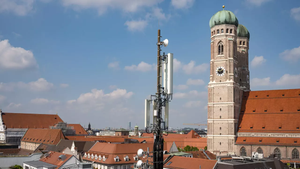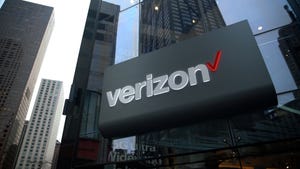Disney's $8.5B check for Hulu stake has cleared, Comcast prez says
The value of Comcast's 33% stake in Hulu is expected to go well beyond that figure following an appraisal process for the popular streaming service.

Comcast's coffers grew considerably late last week as the company started to collect on the sale of its one-third stake in the Hulu streaming service to The Walt Disney Company.
"We collected a $8.5 billion check on Friday [December 1]. The check cleared; it's in the accounts," Comcast President Mike Cavanagh said Monday at the UBS Global Media and Communications Conference, referencing an ongoing sales process that could net Comcast much more than that initial amount when the process ultimately concludes.
Word of the check clearance arrives a month after Disney announced it expects to pay Comcast's NBCUniversal unit at least $8.61 billion for the remaining stake in Hulu. That figure reflects a $27.5 billion floor value for Hulu established in a 2019 agreement between Disney and Comcast/NBCU.
The price Disney ultimately pays for NBCU's stake is expected to rise above $8.61 billion. Under an appraisal process agreed to by Disney and Comcast, Hulu's equity fair value was assessed in September. If the value is determined to be greater than the guaranteed floor value, Disney will pay NBCU a percentage of the difference.
It's expected that the appraisal process, which will factor in Hulu's standalone tech platform along with the value of Hulu's content and bundling components, will be completed sometime in 2024.
Comcast Chairman and CEO Brian Roberts previously has characterized Hulu as a "scarce, kingmaker asset" that would draw massive attention if it were to become available in a traditional auction.
Broadband sub growth still a goal
Turning to Comcast's broadband business, Cavanagh reiterated that the operator is still fixated on a goal to return to subscriber growth over time. Comcast lost 19,000 broadband subs (including 17,000 residential customers) in Q3 2023, and expects to post additional losses in Q4.
But Comcast isn't ready to pinpoint when it expects to turn that corner.
"I can't pick a date of when our goal/ambition to get there due to the competitive intensity, but I believe ... that that [competitive] intensity should settle at some point and we'll be better positioned to for the marketplace."
Alongside typical fiber-to-the-premises (FTTP) competition, Comcast is also being pressured by fixed wireless access (FWA) services in the lower end of the broadband market.
"High speed data is very competitive right now, but it's also a very healthy business," he said, noting the average revenue per user (ARPU) of Comcast's broadband business continues to grow at about 4%.
Cavanagh acknowledged that FWA is likely to continue its run and become a "permanent part of the marketplace." But he also believes Comcast, which is in the midst of a DOCSIS 4.0 upgrade of its hybrid fiber/coax (HFC) plant, is well positioned as FWA eventually runs into capacity constraints as average data use climbs.
He also views fiber as the more critical long-term competitor. About 50% of Comcast's footprint faces fiber competition, a figure that Cavanagh expects to rise to 60% and higher.
Comcast believes it will generate some subscriber growth from ongoing footprint expansions along with opportunities it can realize from the $42.45 billion Broadband Equity Access and Deployment (BEAD) program.
Comcast expects to pass an additional 1 million locations this year. That annual pace could go higher thanks in part to the BEAD opportunity, Cavanagh said.
CBRS: Optionality more than necessity
Cavanagh said Comcast will continue to take a measured approach with its CBRS spectrum, targeting it to areas where wireless traffic is concentrated.
Comcast has begun to deploy a CBRS network in its hometown of Philadelphia as part of a plan to offset MVNO costs.
About 90% of the data volume for each Xfinity Mobile customer already passes over Comcast's Wi-Fi network built in and out of customer homes. Meanwhile, about 60% of the mobile traffic generated by Xfinity Mobile customers that's running on the Verizon network is happening in just 3% of Comcast's geography, Cavanagh said.
That trend will drive Comcast's targeted CBRS buildout going forward, he added, noting that Comcast remains pleased with its MVNO agreement with Verizon.
"It's good that we're testing and rolling out [CBRS], but it's still early days," Cavanagh said. "I think there's so much good in the existing base business that [CBRS network buildouts] is optionality more than it is necessity."
About the Author(s)
You May Also Like












